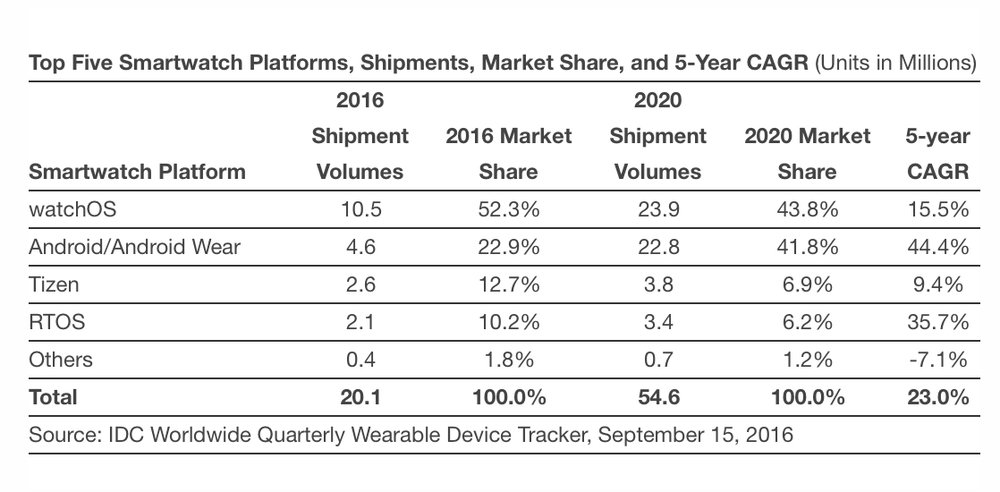A year after the launch of the Apple Watch established a new benchmark for the worldwide smartwatch market, new smartwatch shipments are expected to see only modest growth for the rest of 2016 due to late-in-the-year and iterative product releases. According to a new forecast from the International Data Corporation (IDC) Worldwide Quarterly Wearable Device Tracker, total smartwatch shipments will reach 20.1 million units in 2016, an increase of 3.9% from the 19.4 million units shipped in 2015.

IDC categorizes smartwatches as those that can run third party applications. Examples include Apple’s Watch, Samsung’s Gear S3, Motorola’s Moto 360, and Pebble’s Watch. Smartwatches are part of IDC’s larger category of smart wearable devices, which also include smart glasses and certain wristbands. IDC expects total smart wearable volumes to reach 21.5 million units shipped in 2016. By volume, smartwatches account for the largest part of the category, and are expected to reach a total value of $17.8 billion dollars in 2020.
IDC predicts that Apple’s watchOS will stay atop the smartwatch platform list throughout the forecast period. The Series 2 Watch addresses some of the shortcomings of its Series 1 predecessor, but the lower price on the Series 1 (starting at $269) may end up driving more volume in the upcoming holiday season, according to the research group. Still, these will be enough to keep watchOS the overall market leader, and future iterations of the Watch with new body styles, materials, and cellular connectivity will help cement the company’s spot later in the forecast, adds IDC.
“To date, smartwatches have remained in the realm of brand loyalists and tech cognoscenti, but we expect that to change over the next few years,” says Ramon Llamas, research manager for IDC’s Wearables team. “First, smartwatches will look and feel like traditional watches, appealing to those who put a premium and design and style. Second, once the smartwatches get cellular connectivity, they’ll disconnect from the smartphone, making them more useful. Third, smartwatch applications will build on this cellular connection, and connect with other devices within the home and at work. Finally, smartwatch prices will come down, making them more affordable to a broader market.”

